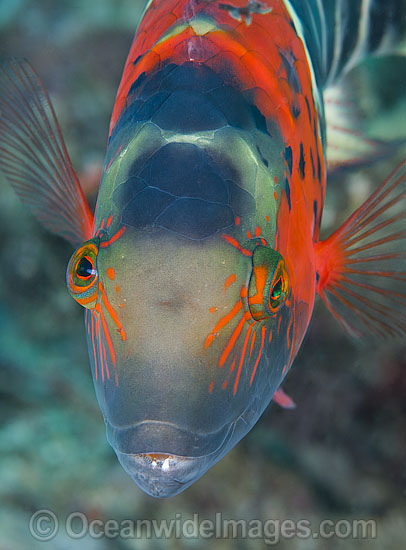
Since graduating in June, I’ve spent all of my weekdays “working”, if you will, on campus at UChicago performing research on fish. I figured I’d spend some time writing about my days to take a break from some reading I should be doing. The broader goal of my lab work is to discover exactly how organisms sense their environment and what happens to their motor control upon loss of the sensory system.
Fish and other aquatic creatures are useful for studying motion and sensation because their movements are very distinct, easily visualized and dependent on their morphology. It’s not very helpful to use any random sea creature to study this, since some fish, like eels, use their slender bodies to flex and wiggle through water. Other fish, like tuna, can swim extremely fast using powerful, sweeping movements of their very large tails. We’ve honed in on a specific family of saltwater fish, Labridae, commonly known as wrasse, which evolved to use their pectoral fins when swimming.
Our experiments involve taking a red-breasted wrasse (see above picture) and recording its pectoral fins as it swims in a flow tank. We place six electronic probes into six corresponding muscles within the fin. These muscles are responsible for bringing the fin towards and away from the body, and the probes record the signal activated as the muscles flex and relax. Next, we snip the sensory nerve that gives the wrasse feeling in its pectoral fins, and we let the wrasse swim, while again, recording its muscle activity.
The muscle data we’ve gathered in these experiments is necessary to understand the organism’s exact response to sensory loss. Some questions we’re trying to answer: “Before and after sensory loss, how well is the wrasse swimming and what information did its fins relay to the brain before and after sensory loss?” or “Is the fish monitoring the position of its fin as it moves? If so, what types of sensory cells on its fins are sending this information?” More broadly, we’ve started to notice some evolutionary differences between the wrasse and its beautiful cousin, the parrotfish. The parrotfish, also a member of Labridae, is mysteriously more efficient and quick. Overall, it swims quite similarly to a bird in flight…(watch the videos at the end!). Why? Not completely sure, but we’re writing a publication answering these questions as you read this!
I’ll add that I’m not particularly interested in fish, however they’ve taught me a great deal about sensation and perception in organisms, not to mention the trials and tribulation of practicing science on these slippery, yet wonderful creatures. All in all, I’ve garnered quite a bit of appreciation for them in the natural world :)
Cool vids (not taken by me): Wrasse swimming Parrotfish swimming Notice any differences?